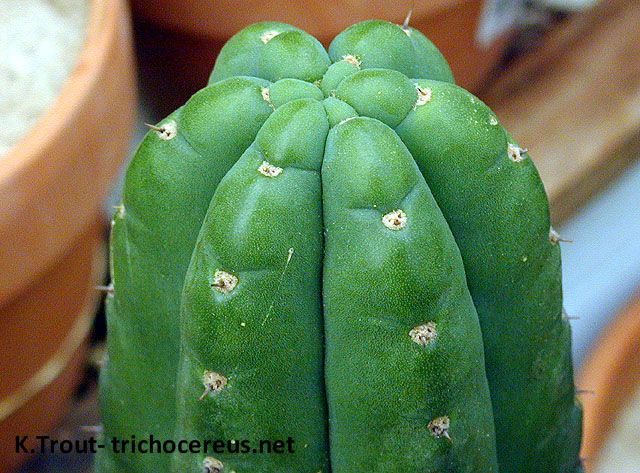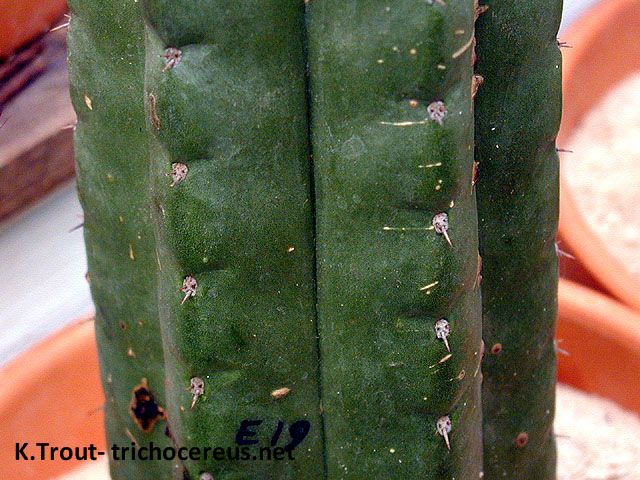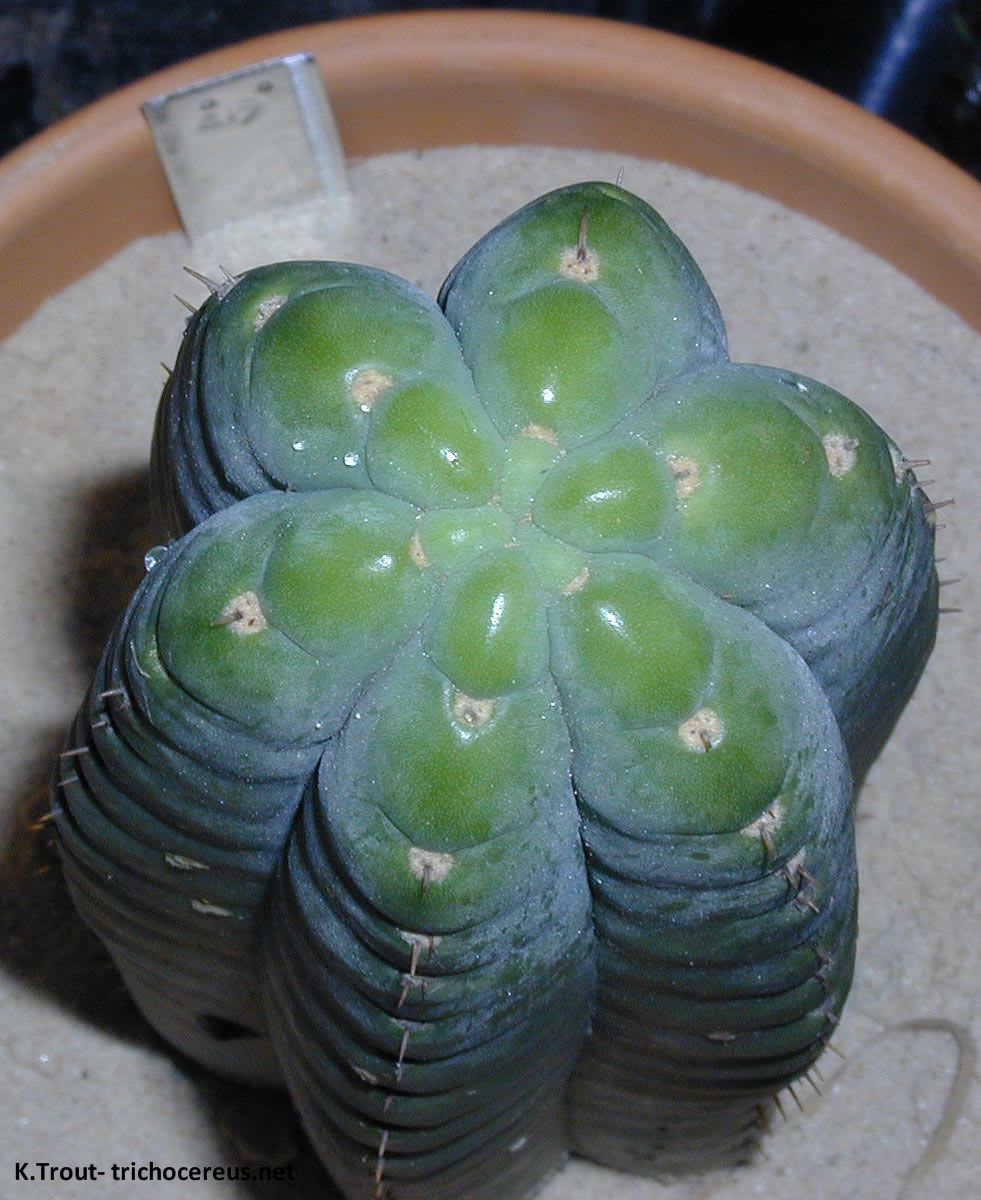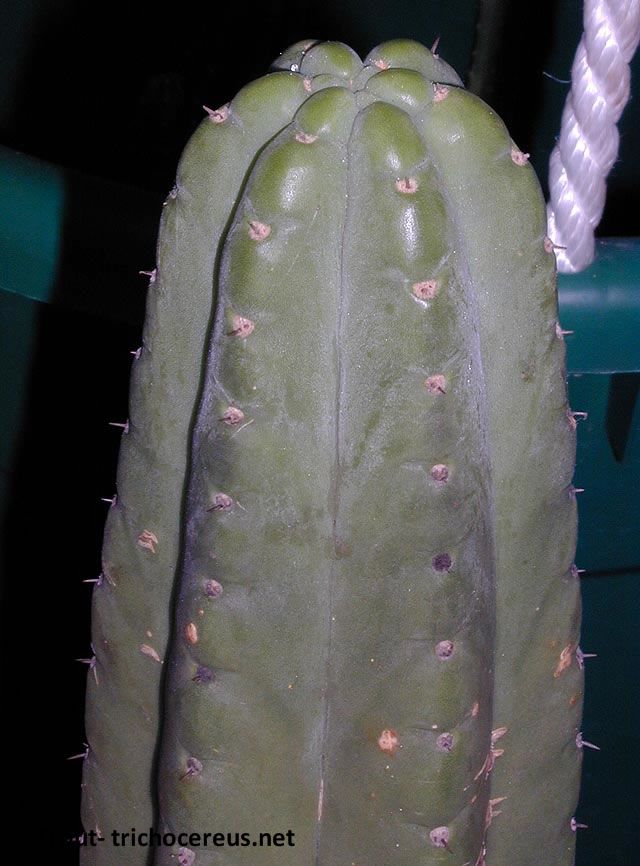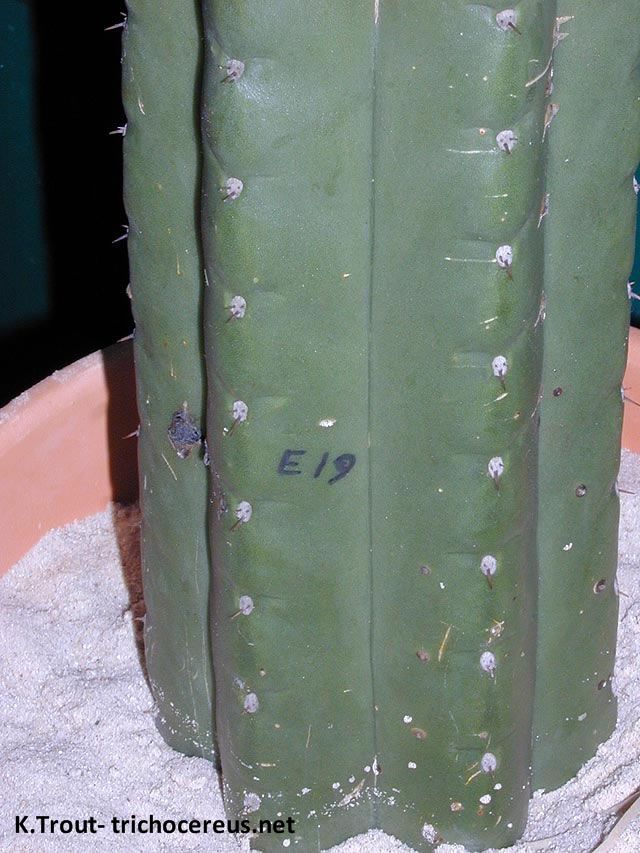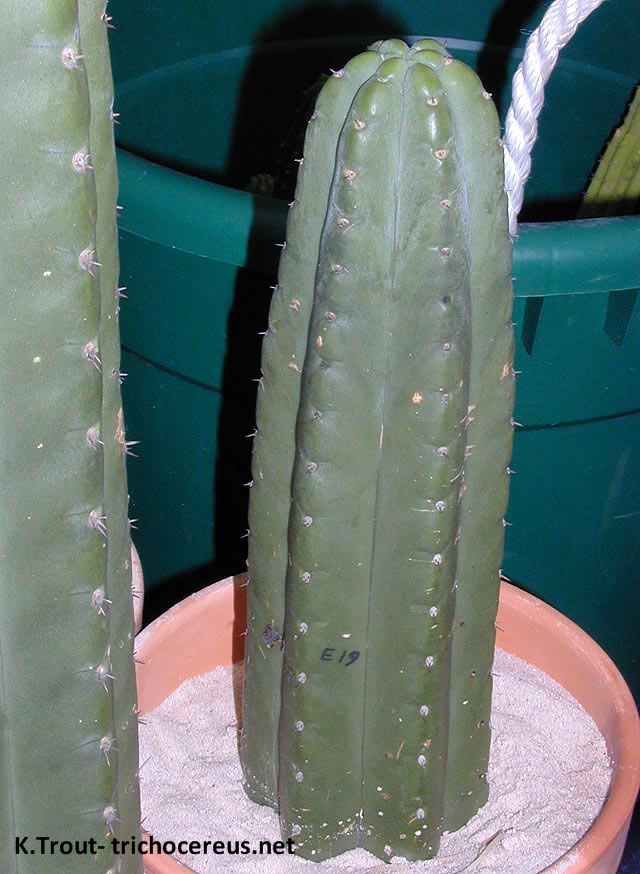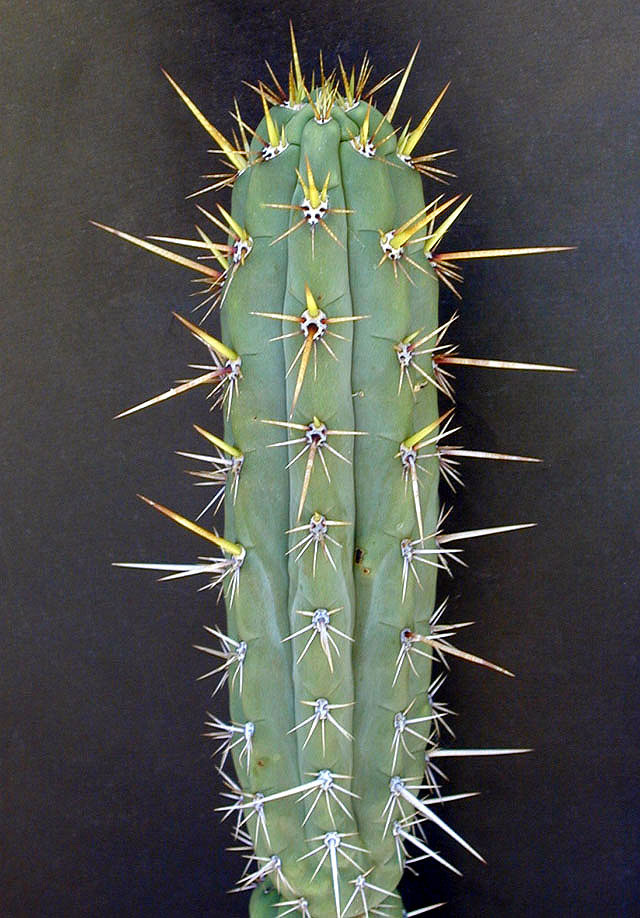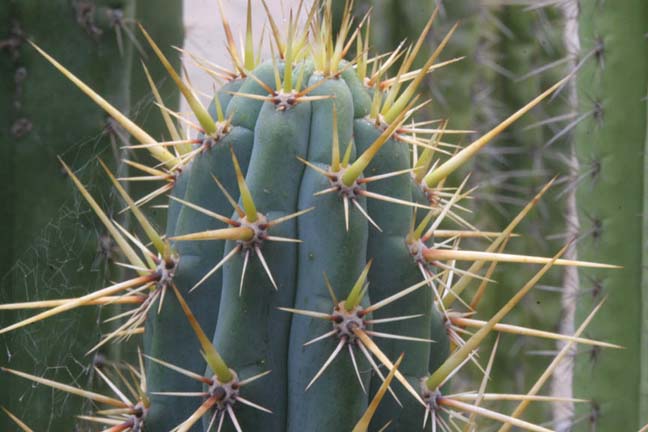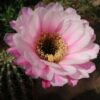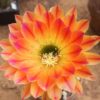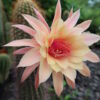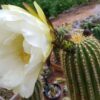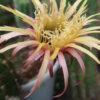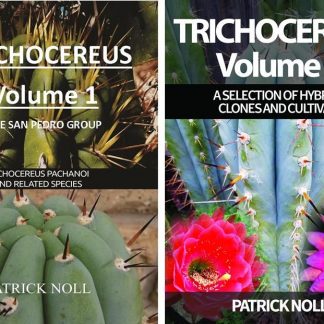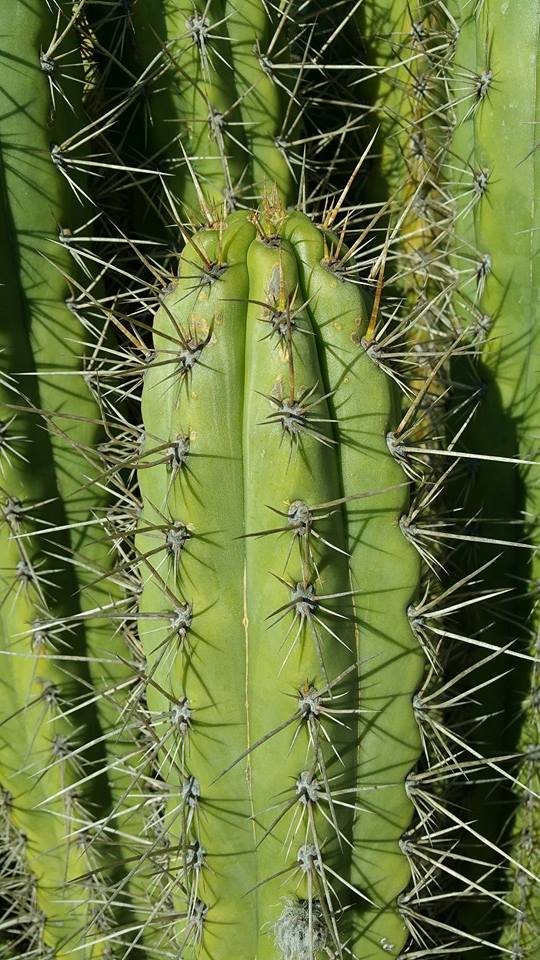
KK242 Trichocereus cuzcoensis is a collection number by the Peruvian seed & cactus seller Karel Knize. He is know for his many Trichocereus species and KK242 was one of them. But it´s not actually a species because we grew all kinds of different species from those KK242 seeds. Most were Trichocereus cuzcoensis, but that´s definitely not the complete story.
Most of the plants labeled as KK242 are representative for a very typical Trichocereus cuzcoensis. However, the KK242 is simply a collection name that stands for the area where the plants come from. And within that area, there are all kinds of different populations and all were sold using the same name. Imagine you live in a town and every plant is given the same collection name. That is what´s actually going on with KK242. Like already mentioned, the largest part of the plants labeled KK242 are Trichocereus cuzoensis. That is also because the name became the archetype of a typical Cuzcoensis and there are many people that label every one of their cuzcoensis plants “KK242”.And that´s neither correct nor practicable.
Now, most of the KK242s on the market were distributed by Knize´s website. If I remember correctly, none of the KK242 sold was actually labeled as Trichocereus cuzcoensis.
Those are the KK242 collections that I know of:
KK242 Trichocereus peruvianus – Matucana (frosted stem, brown spines)
KK242 Trichocereus peruvianus – Rio Chillon (from central Peru)
KK242 Trichocereus peruvianus – form. Langa
KK242 Trichocereus peruvianus – Rio Lurin (please note that the Lurin Trichocereus is actually a peruvianus, despite it being labeled as KK242!)
KK242 Trichocereus peruvianus – Huancavelica (which probably is a Peruvianus too)
Please note that apart from those different collection sites, there were cuttings and seeds from all kinds of mother plants sold and distributed throughout the world. That means that seed labeled as Kk242 can produce all kinds of plants, not just the KK242 Cuzcoensis.
Where to buy seeds and plants of KK242? : Well, if you are looking for a KK242, it is your lucky day. And that is because they are everywhere. On Ebay, a large part of the Trichocereus species sold are actually KK242s. Nonetheless, there also are other cuzcoensis varieties that you can encounter and many of them might even be labeled KK242, though they actually are a different cuzcoensis type from another location. And that´s why the bad image that the species Trichocereus cuzcoensis, or the KK242 in particular, receives is not justified. They are wonderful and amazing specimens and have such a great diversity that it´s totally not fair to reduce KK242 to that well know cuzcoensis type from Matucana. Some seed sellers might even have some KK242 in stock (and potentially labeled as Trichocereus peruvianus) though they are not aware of it. Most seed collectors or seed producers just label them “Trichocereus peruvianus” and since they don´t have the space or the funds to grow them all before they offer the seed, they don´t or simply can´t test it. Many people that sell cactus seed are still poor and they neither have the funds to grow them nor the knowledge to ID them. Of course, there are very skilled Taxonomists and Botanists from countries like Peru, Argentina or Bolivia. But there also are many people selling seeds or cuttings that are not.
Mislabeled seed is a problem that almost every seed salesman has to face from time to time and I know of a couple of cases in which large shop owners stopped doing business with certain collectors/wholesalers who sell mislabeled seeds that brought them into trouble with their customers. I recently came across someone who was pretty pissed for receiving a KK242 instead of the Tr. Peruvianus that he ordered. And with a good reason. But I guess it comes with the job that stuff like this happens from time to time. And if I were in the position of someone who ended up getting a cuzcoensis instead of a peruvianus, I´d just message the seller and explain the problem. You know, there are so many different types, varieties, and even intermediates, that it´s sometimes impossible to draw the line somewhere. Again, Trichocereus cuzcoensis is SO MUCH MORE than just KK242. And there are countless peruvianus types that are somehow related to cuzcoensis and show or two traits that are typical for cuzcoensis too.
Most wholesale seed collectors label their plant “Trichocereus Peruvianus” and keeping in mind the current taxonomy (which tends to merge the plants into a bigger species), it might even be the correct taxonomical label. Personally, I think a shop owner should add as much information about the background of a plant that he has, in order to give the customer a vague idea of what he can expect to grow. But since that´s not always possible (due to collectors just not labeling plants right) it´s the stuff that will always happen. And usually, that´s not because the seller is greedy SOB who wants to rip-off his customers, but because there aren’t so many people around who can keep peruvianus and cuzcoensis apart. Those collectors rarely are skilled with ID and though they sometimes know how the type they collect seed of is called by the locals, it´s far from being reliable. There are cuzcoensis forms available from Peru that come labeled as Trichocereus macrogonus or Trichocereus peruvianus. Because that´s how the other collectors labeled them. And chances are that other collectors will use the same name in the future, whenever they collect seed of that plant.
It´s not hard to recognize the KK242 cuzcoensis, but as I already said…where to draw the line? There are so many intermediatory forms that it´s kinda pointless because you´ll end up calling some perfectly peruvianoid types a Trichocereus cuzcoensis, just based on the fact that it has a couple characteristics that also exist on a cuzco.
Most of the people who offer “cuzcoensis” labeled as “peruvianus” probably weren’t even aware of the fact that their plants are more on the cuzco end of the spectrum. And since modern taxonomy went on to merge a lot of those species into the larger ones like “peruvianus” and “pachanoi”, this might happen a lot more in the future. And when dealing with seed collectors that visit local populations in Peru, Bolivia or anywhere else in the world…it´s rare that they include the collection sites with their seed or even add pics. I know many wholesalers, who have to grow their seed just to know what type they have bought. And if you keep in mind that some of those plants will take 3-5 years until they are big enough to say anything about the local population, it get´s obvious that the remaining seed would have already become unviable in the meantime. And that is a problem that will never really go away. Of course, it´s actually a pretty bad situation but the short lifespan of some seeds is the reason why there are so many shaky ID´s when buying seed from Peru; or other areas where cacti are grown as commercial crops. But despite the fact that it can be frustrating to find out that you ended up buying mislabeled seed…I still prefer it to getting unviable seed. Because thats the only thing worse than getting mislabeled seed.
So yeah, always ask where the seed is coming from. And ask about how fresh it is too! An honest seed supplier is EXTREMELY important because when growing plants from seed, a lot of this is based on trust. From all the cactus seed, I bought in my lifetime, at least 1/3 was unviable or misidentified. And as a buyer, that´s something that you can´t prevent. Some crosses just are bad or are a genetic mismatch. Or, some seeds are just too old.
So yeah, if there are issues with seeds contact your seed supplier and tell them/ask for a replacement. Not only can you help to weed out unreliable suppliers but you give the store owner a fair and honest feedback. KK242 Trichocereus cuzcoensis is a type that is notorious for having a whole lot of bad seed available on the market. I honestly only heard about one or two people who successfully raised some of them from seed. One of them is the SAB store by the way. Apart from the two I just mentioned, I only heard of unviable KK242 seed. That doesn’t mean that there is/was no good KK242 Trichocereus cuzcoensis on the market…but please be careful when buying this type of seed because a lot of it is, well let´s call it “difficult”.
I have many pics on this website and most of them include data about where the plants are growing. It´s not always possible to guess how a seedling might look like in the future, but the collection site is a good starting point.
If you have pics of different KK242s, please let me know our Trichocereus Facebook group and I´ll add them to the site.
Photos of Trichocereus KK242
Pic: Master Evan
KK242 Matucana – Copyright Trout
KK242 Matucana, Copyright Trout
Another type that Knize sold. Please note that this plant looks nothing like the KK242 Cuzcoensis. It´s possible that it is related to the more Cuzcoensis type KK242, but it´s a great reminder that KK242 is nothing but a “location” and not, the plant!
The plant above is what was grown from KK242 Seeds from JLH.
Copyright: K.Trout
KK242 – Rio Lurin or Lurin Valle
This Form is a Plant that is very different from the KK242 Cuzcoensis that became so common around the World. It´s more of a standard Trichocereus Peruvianus and looks absolutely stunning as an Adult Plant! Great Type!
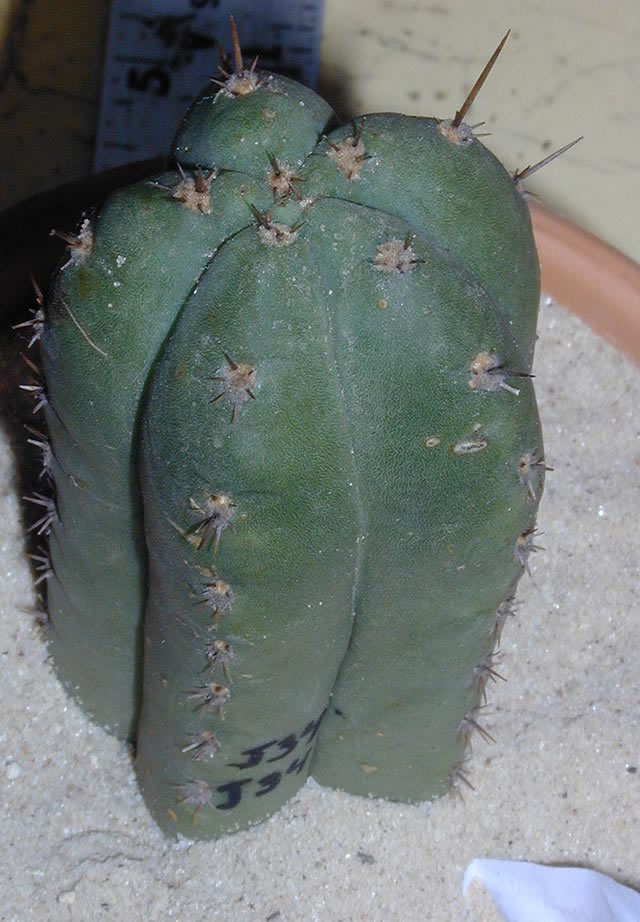

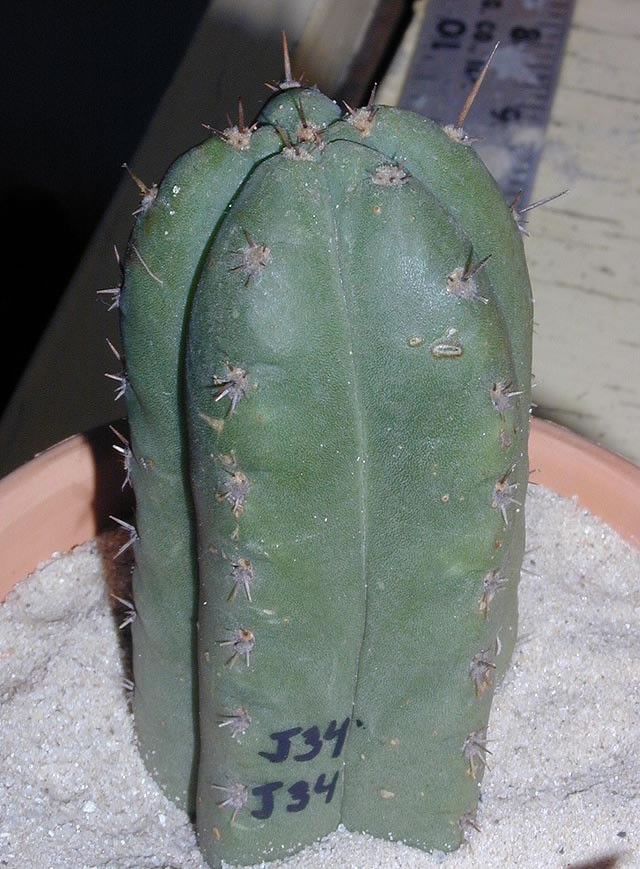
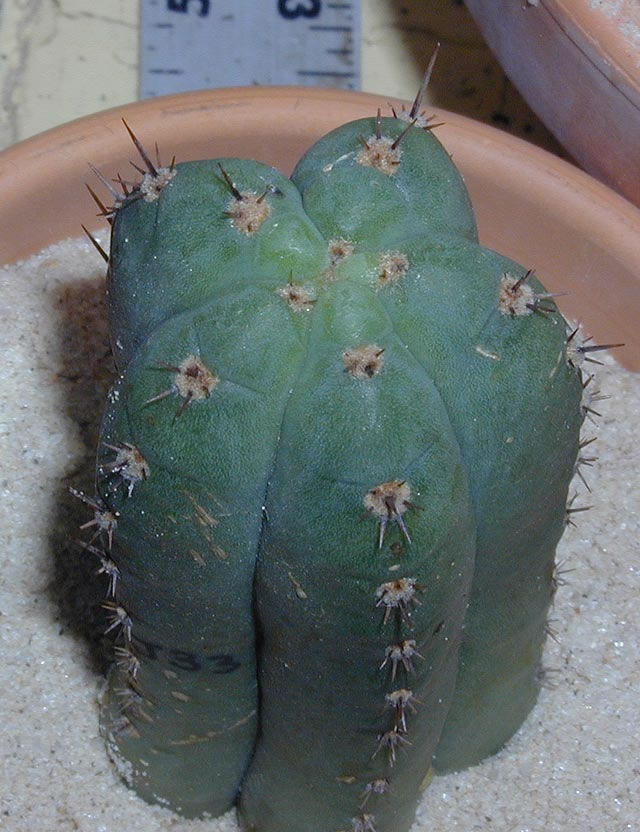

TRICHOCEREUS KK242 Bridgesii
So this Peruvianus was grown from a KK242 Seed Bag. It is obviously not the typical Cuzcoensis Type Tricho so i found it noteworthy to add this plant.
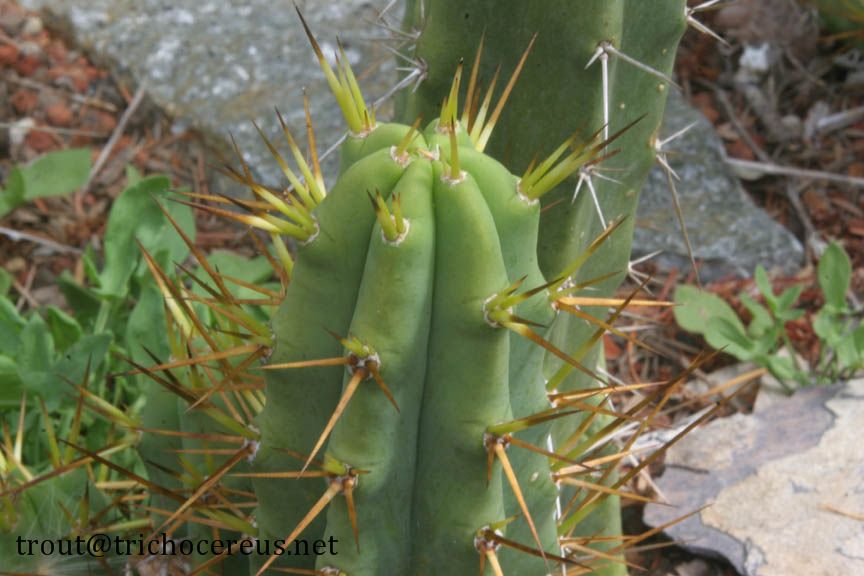
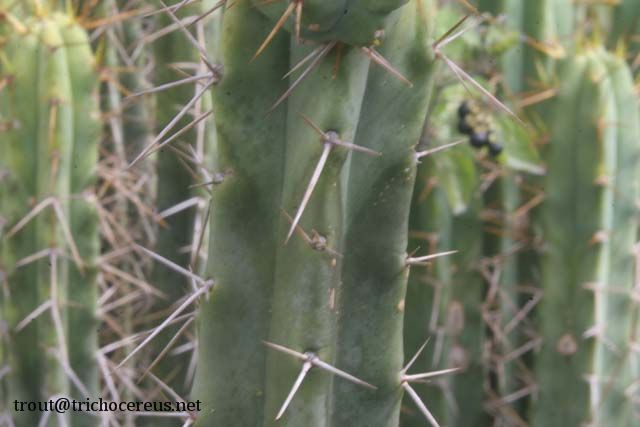
Trichocereus KK242 Matucana
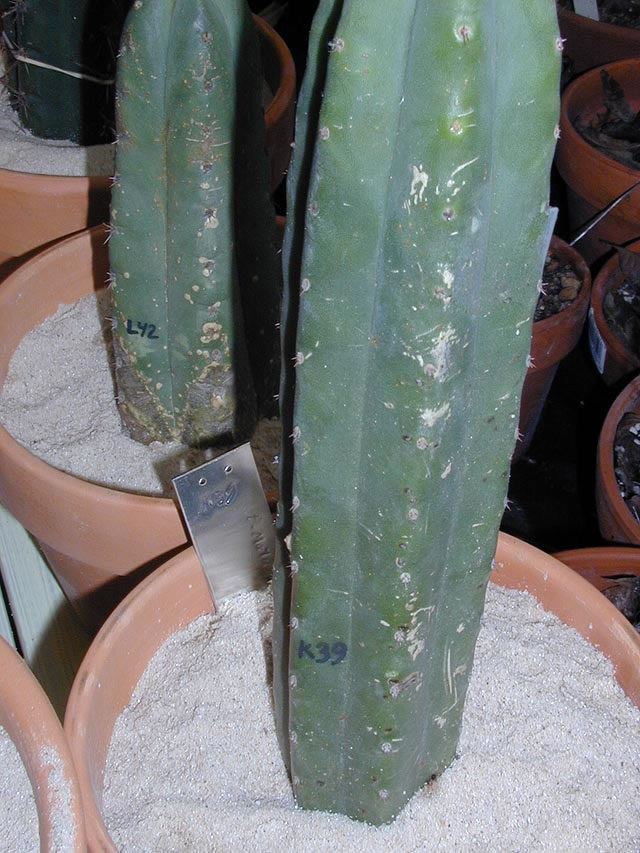
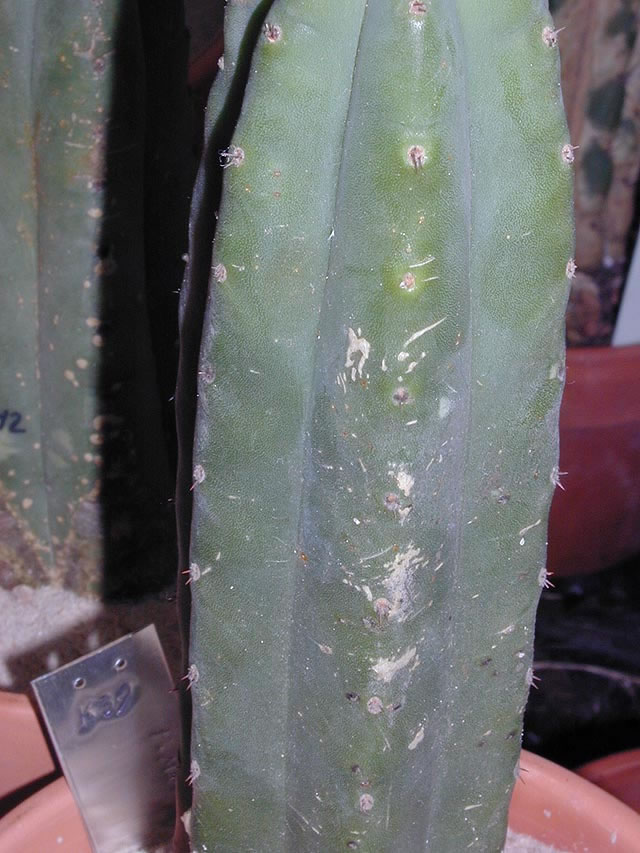
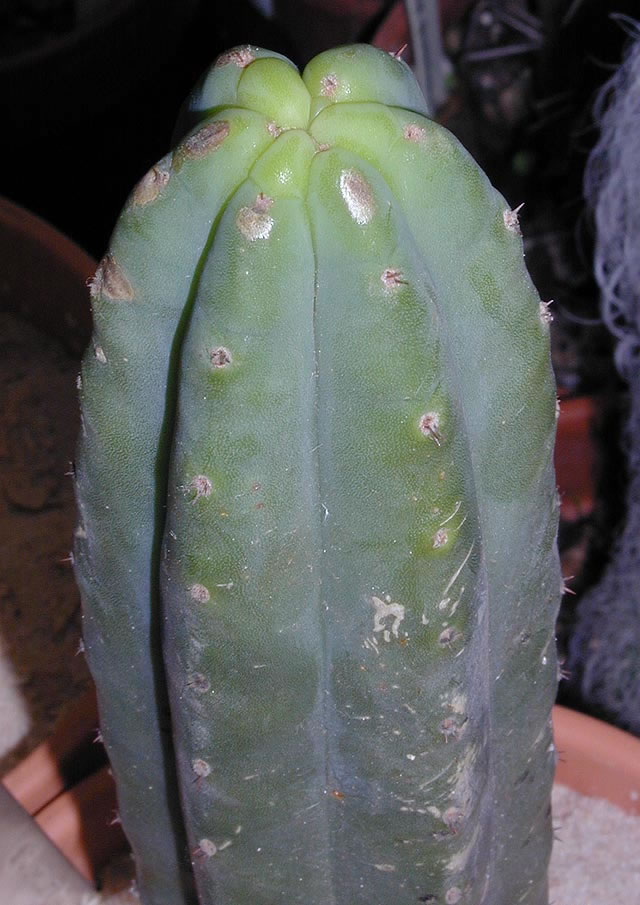
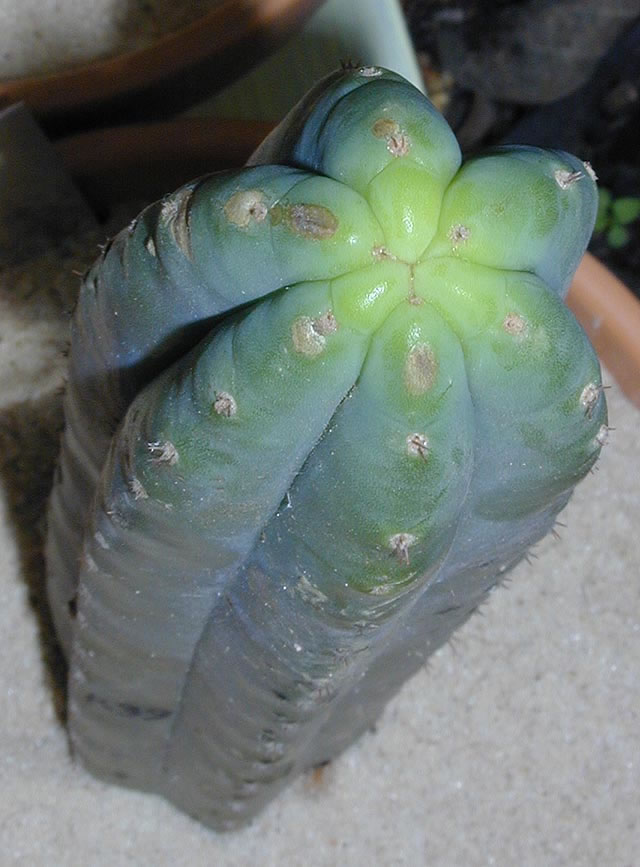

Trichocereus KK242 – Langa
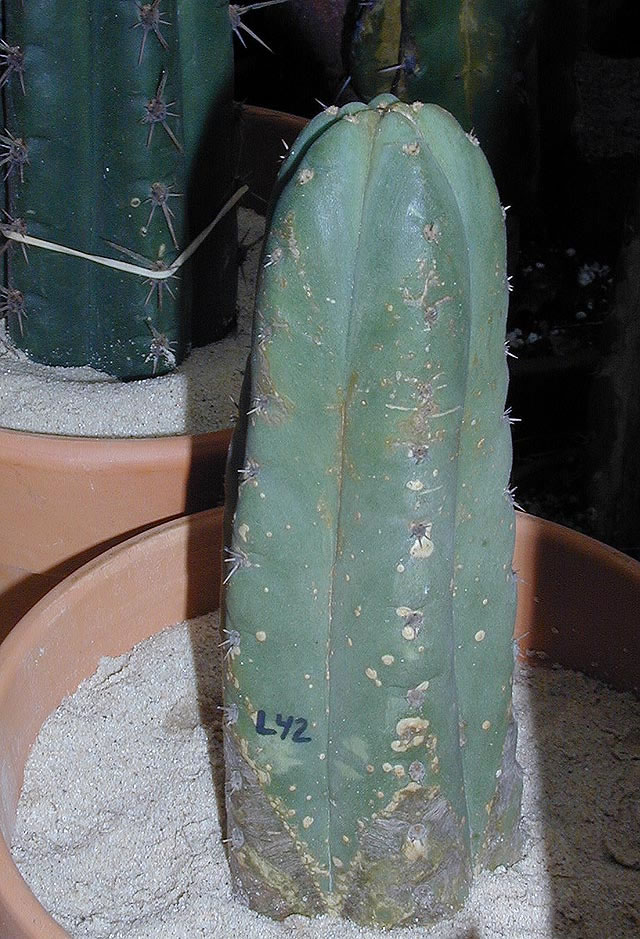
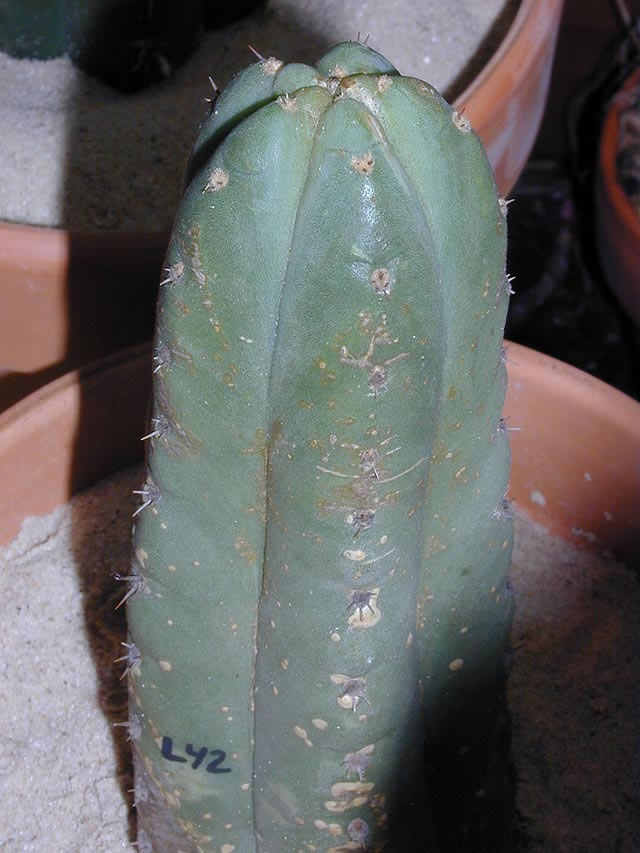
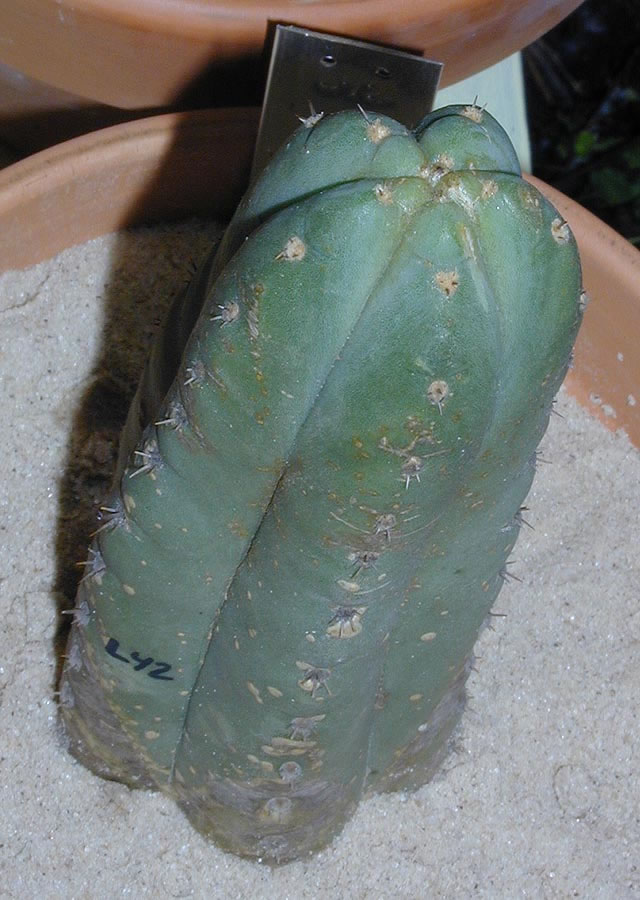
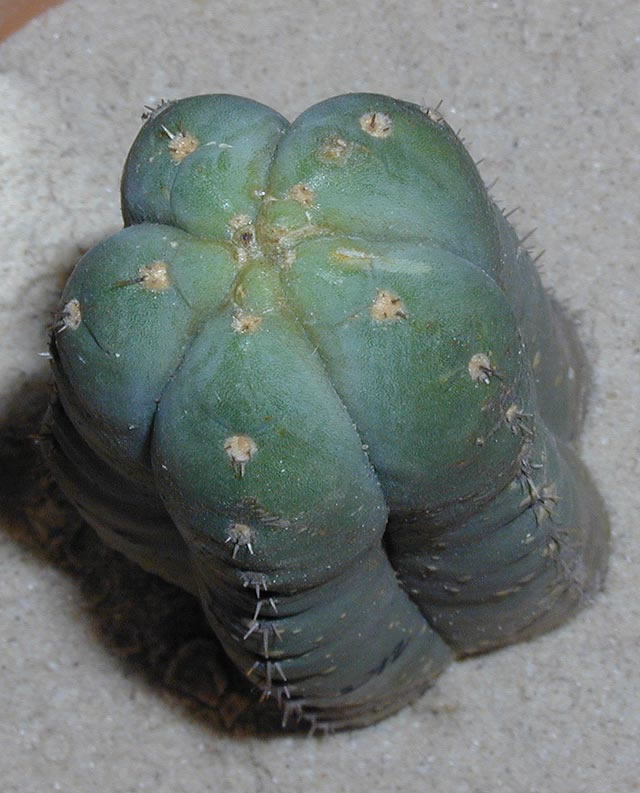
Tric
Check out our main plant database pages for Trichocereus pachanoi aka Echinopsis pachanoi here:
And Trichocereus bridgesii here:
Also check out our Trichocereus Facebook group here:

